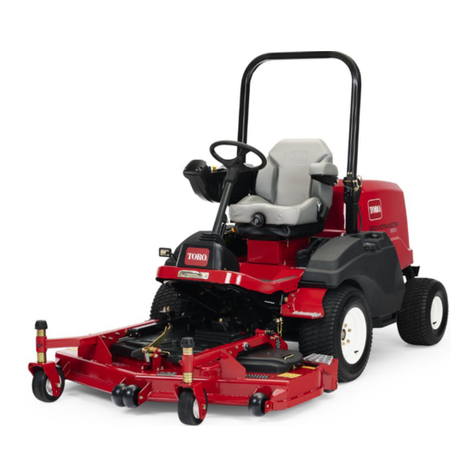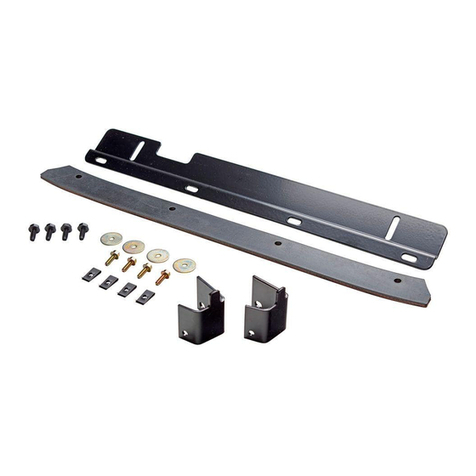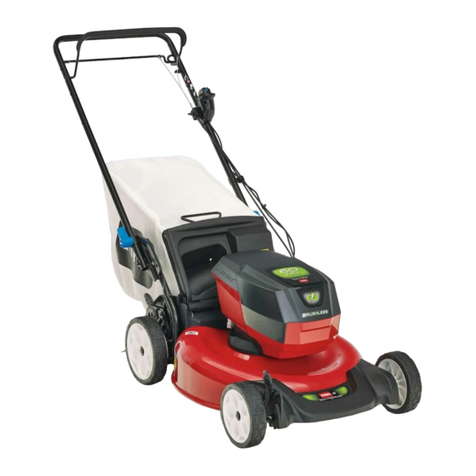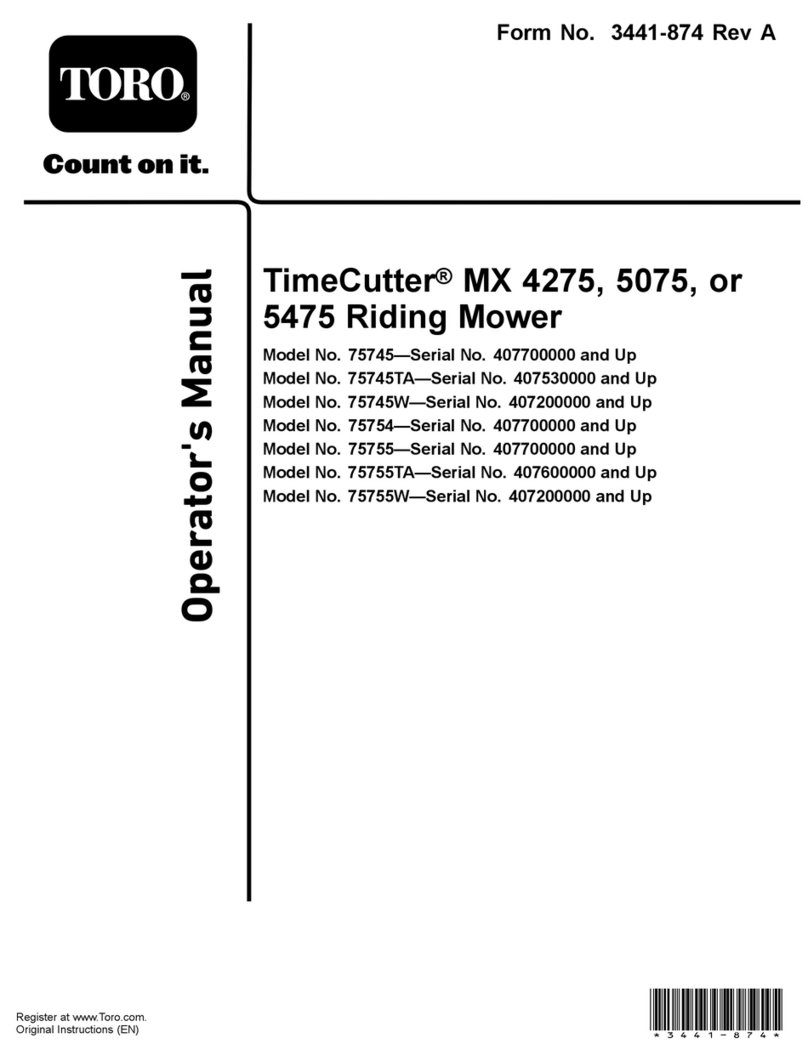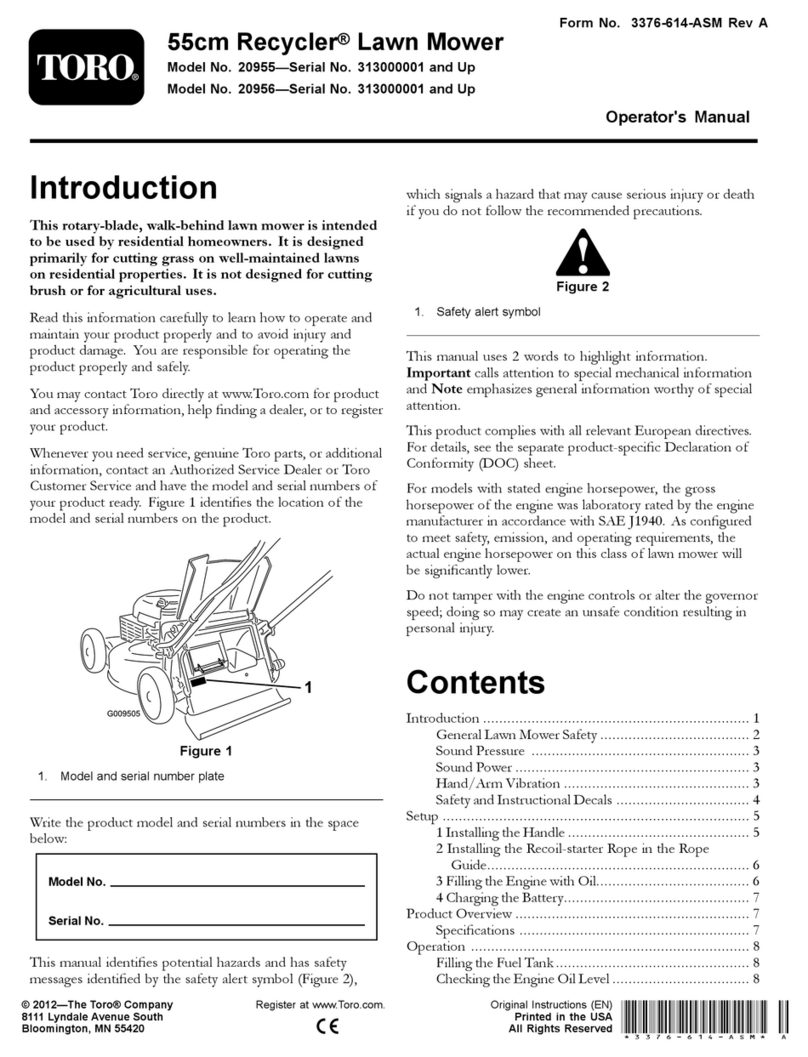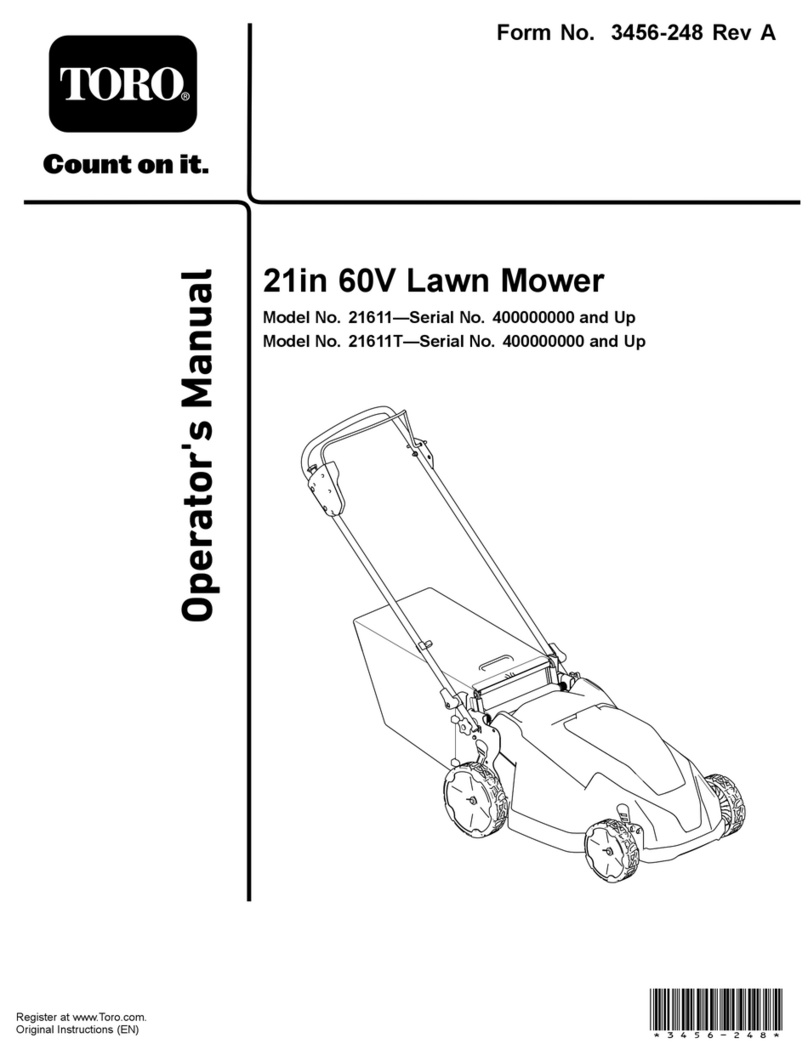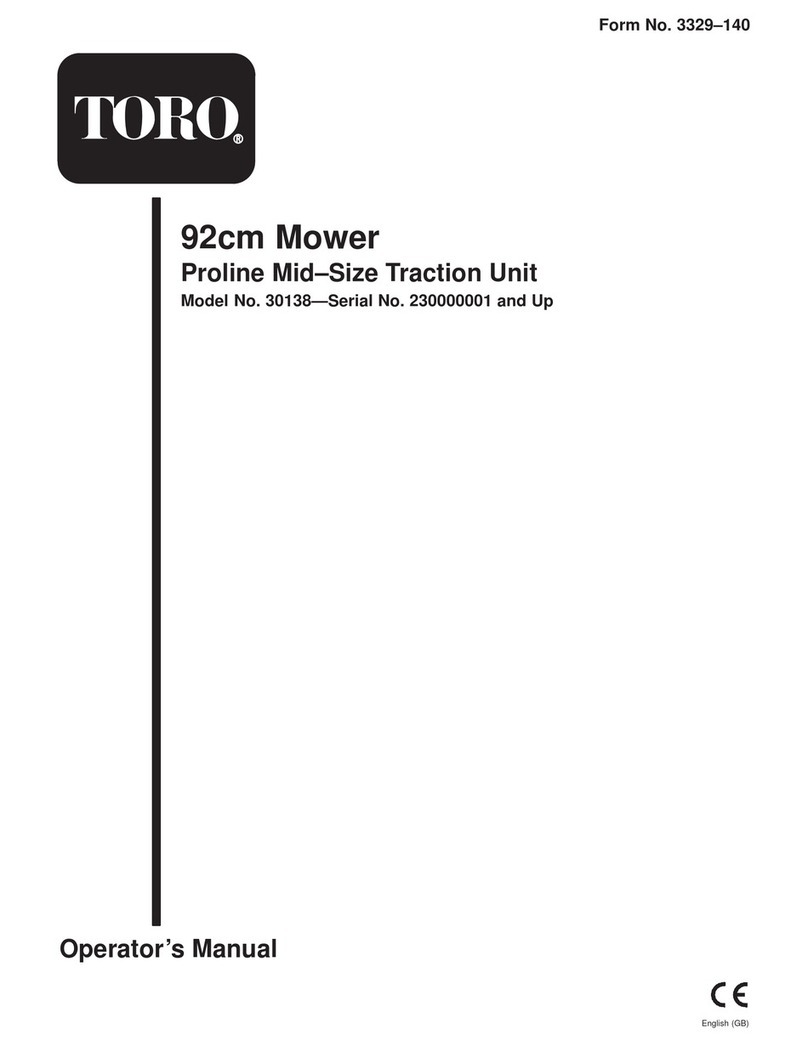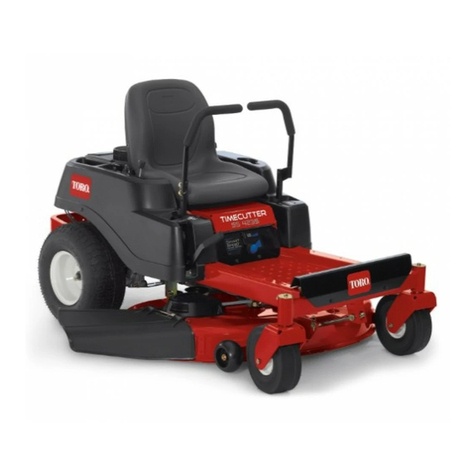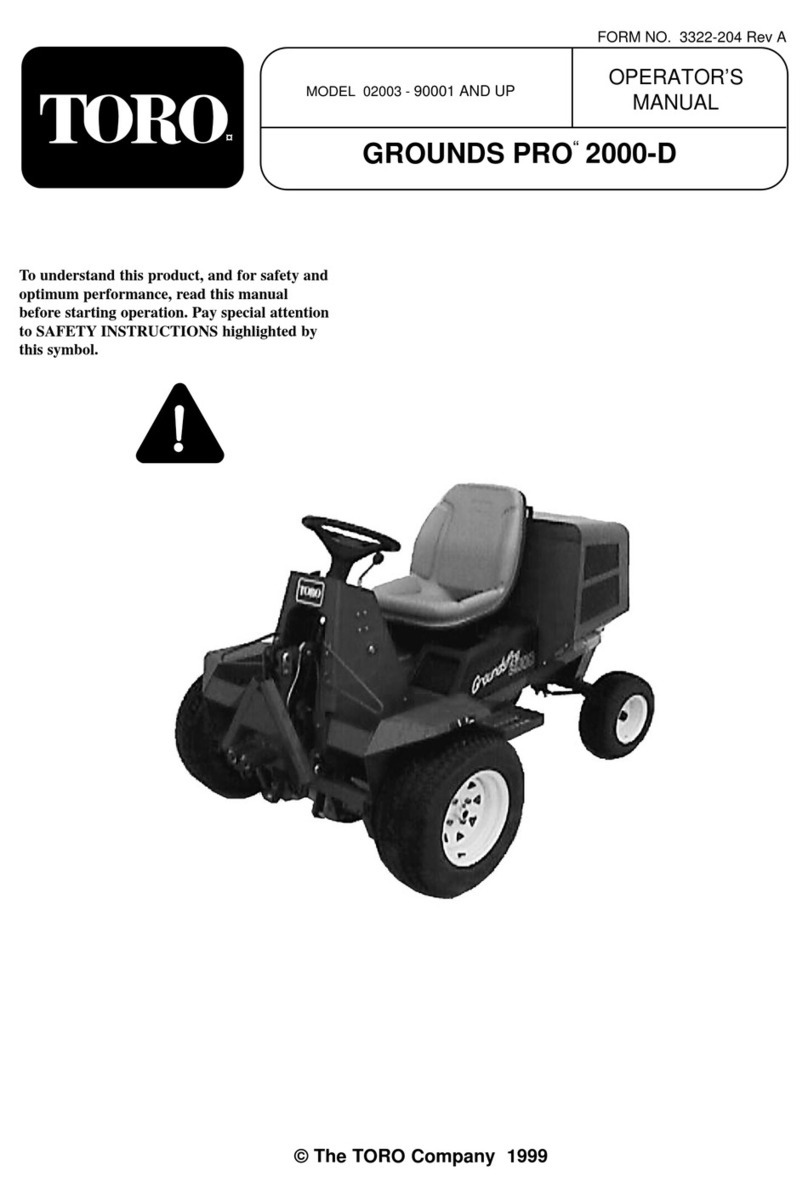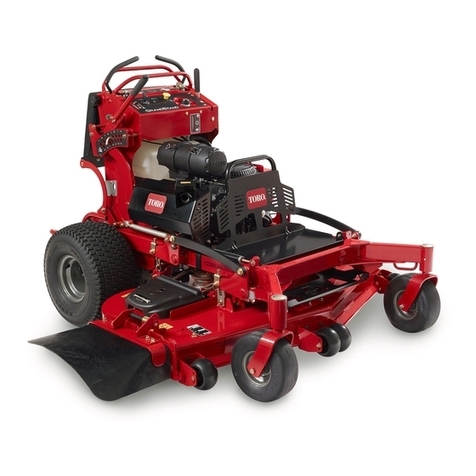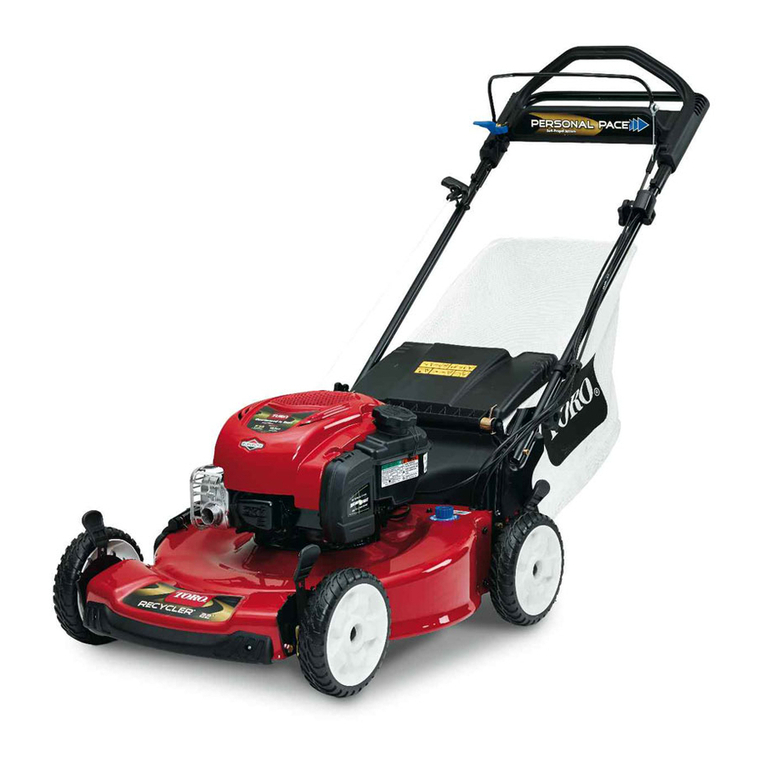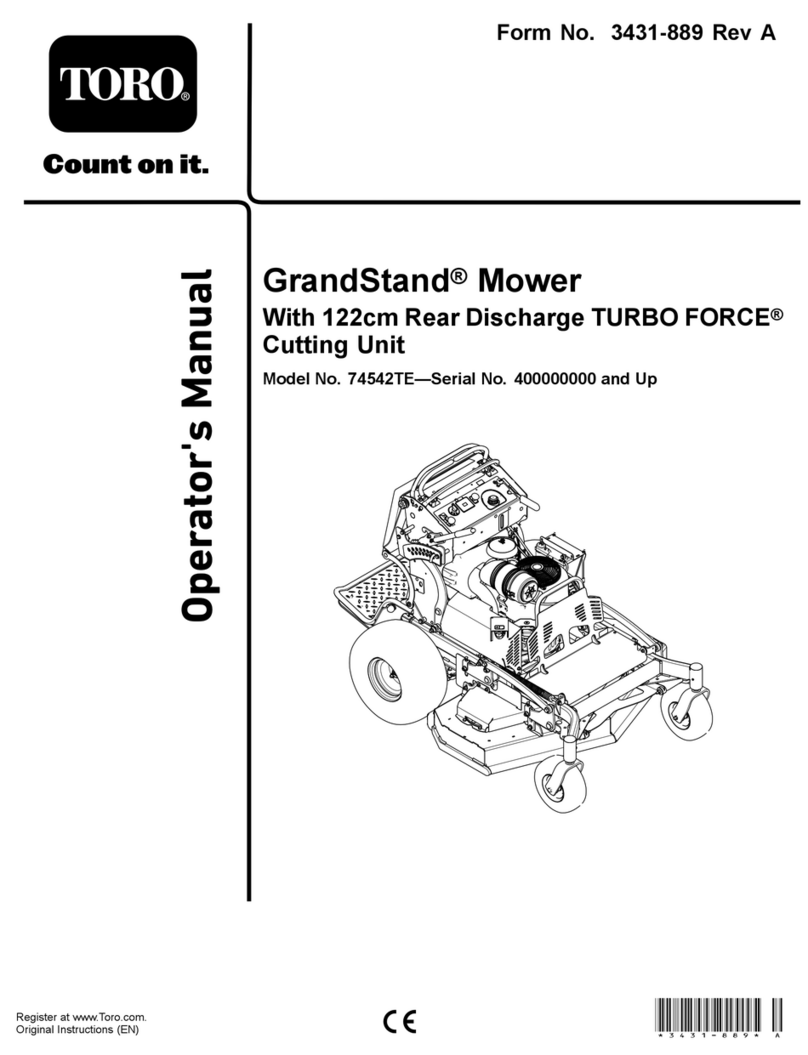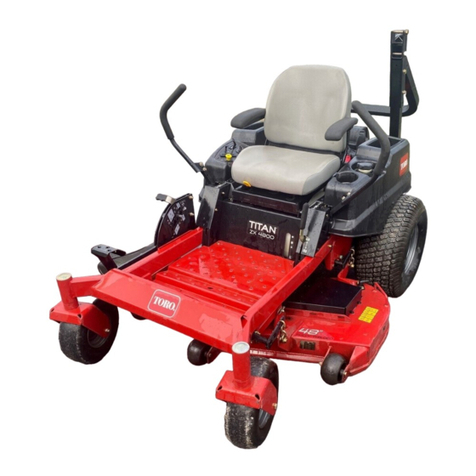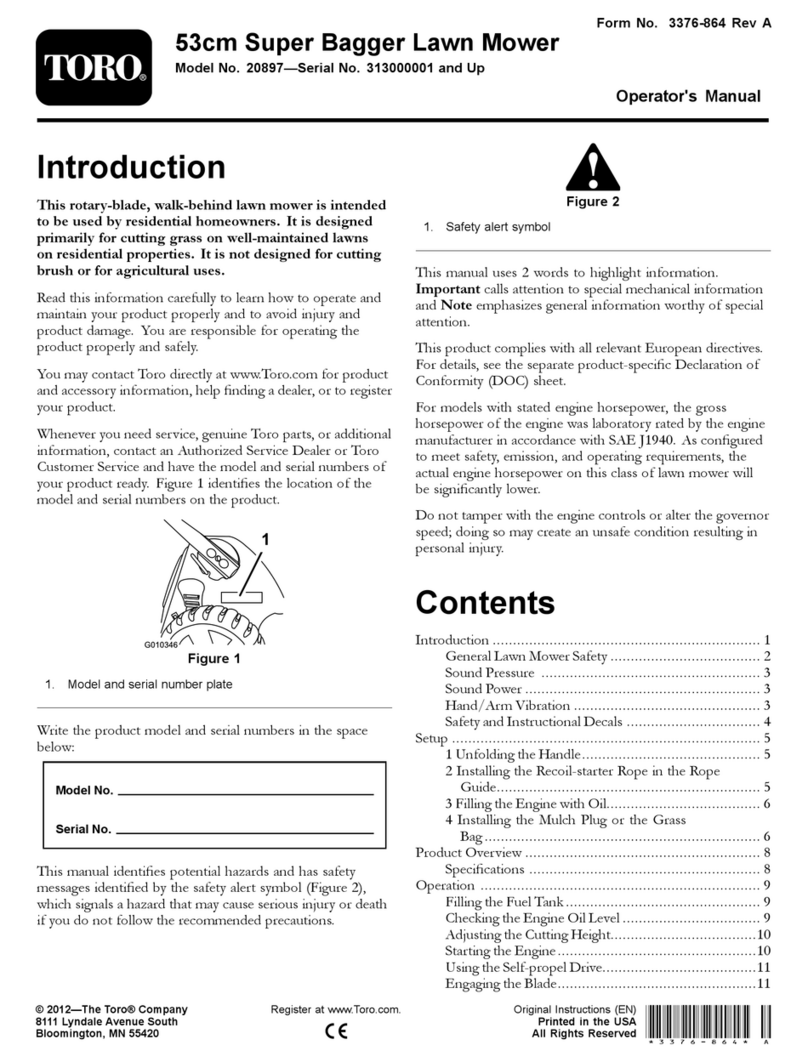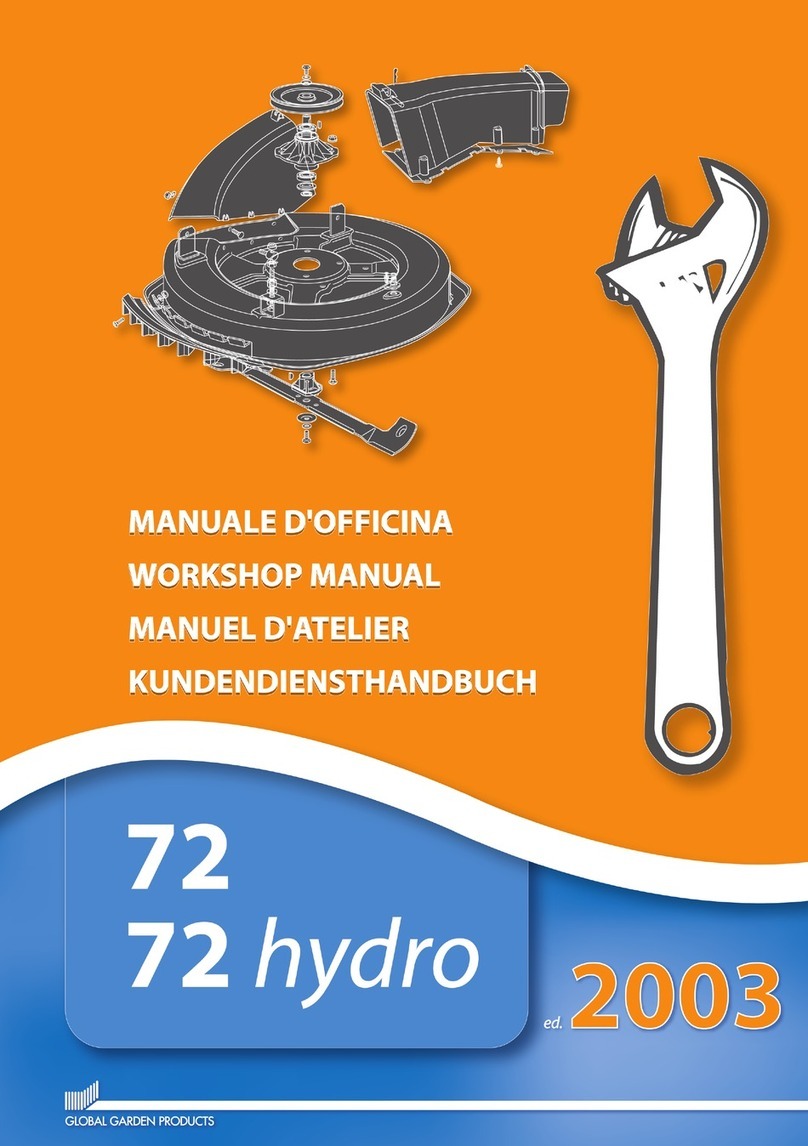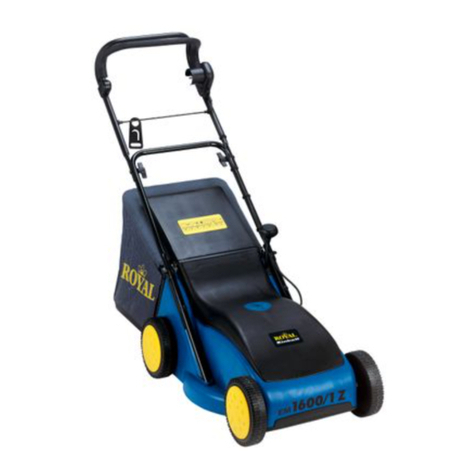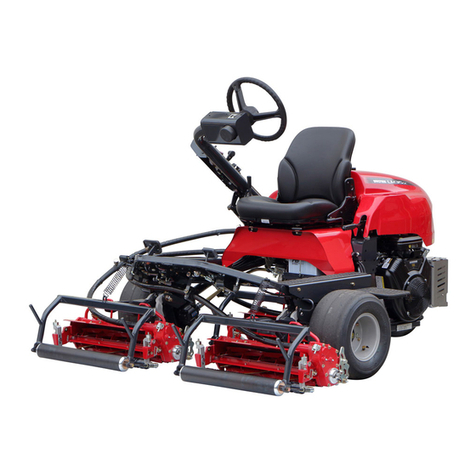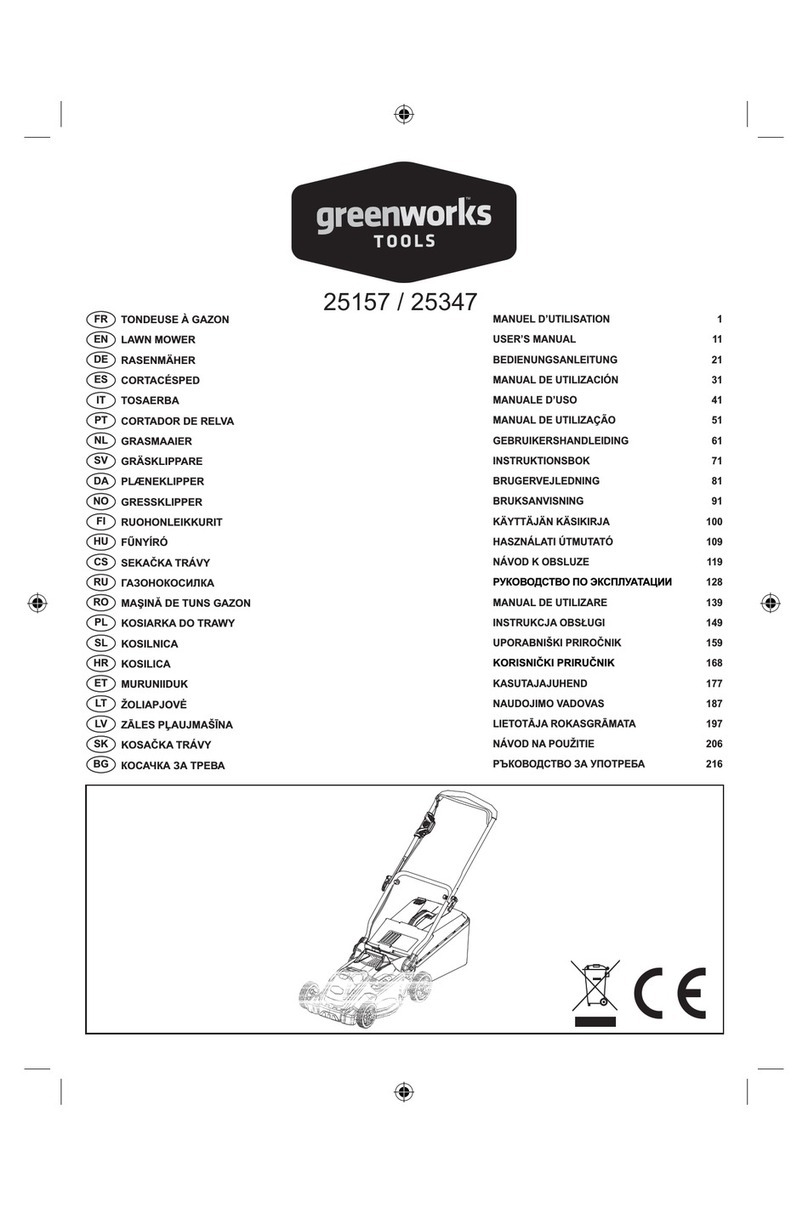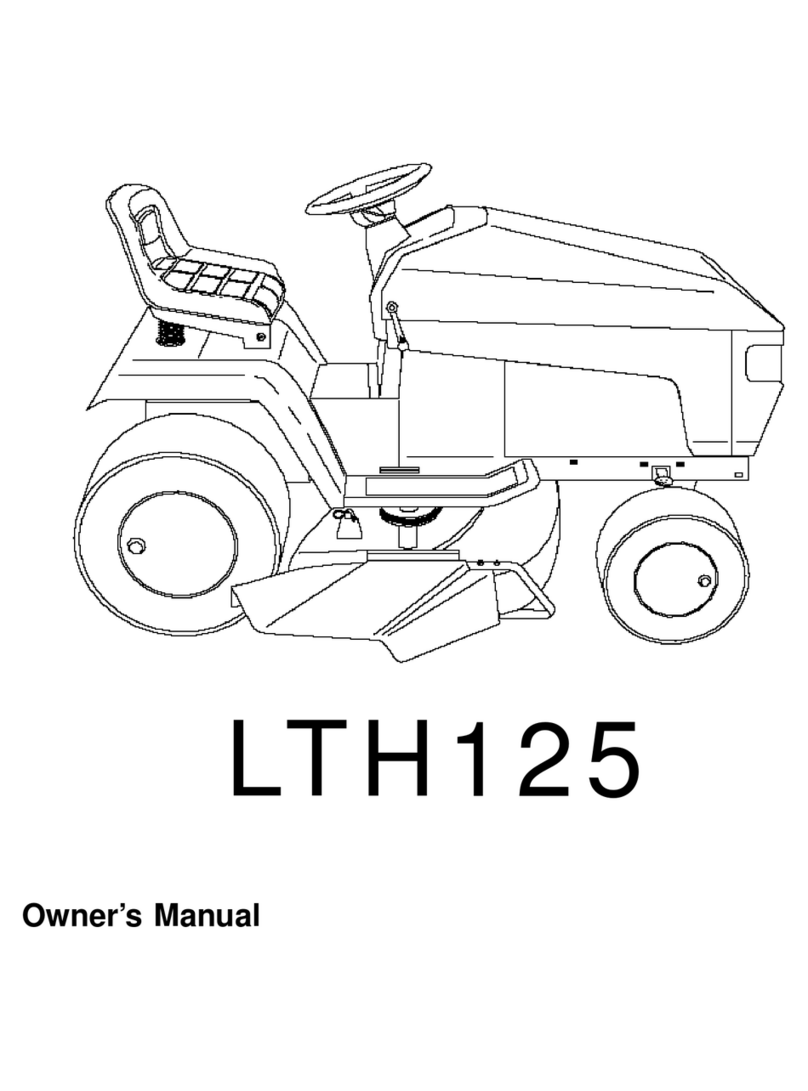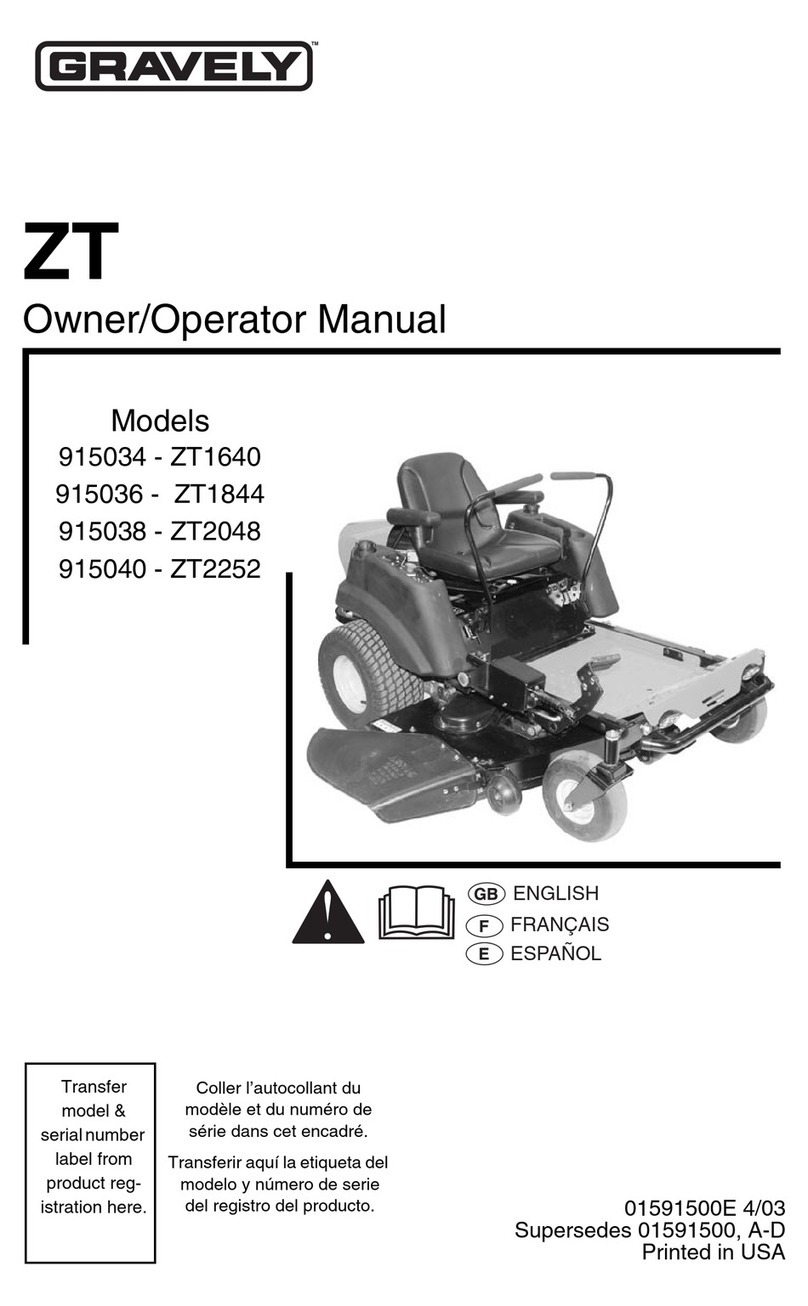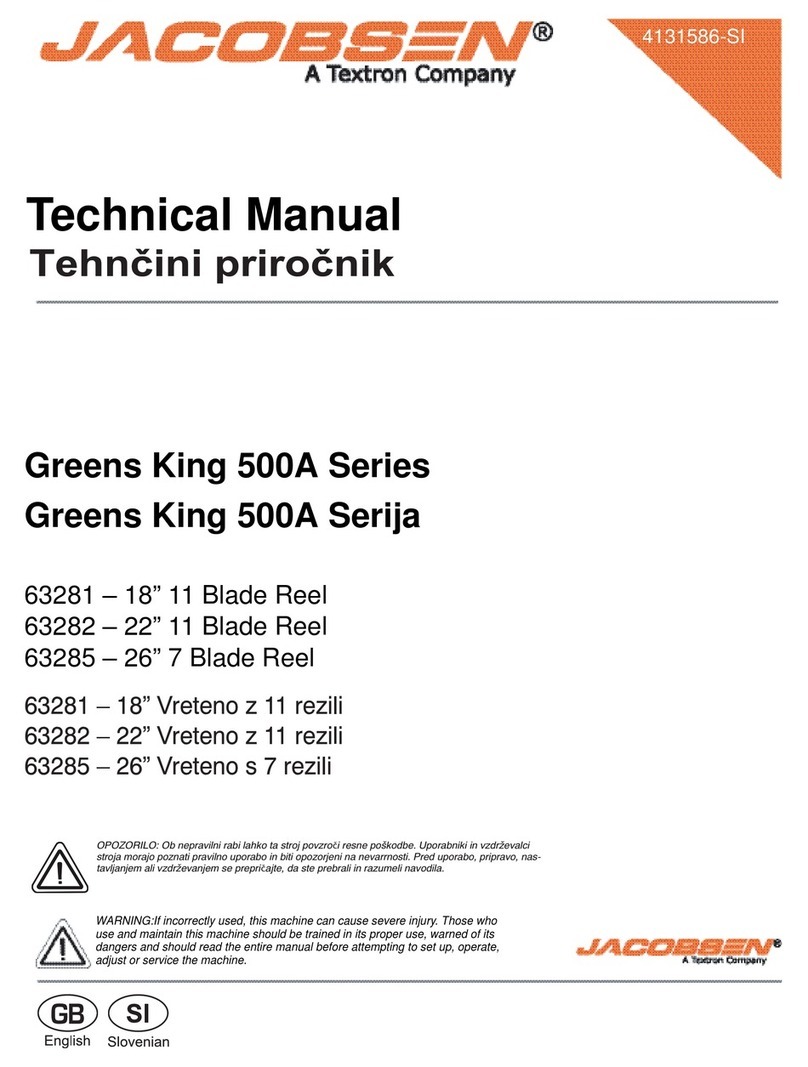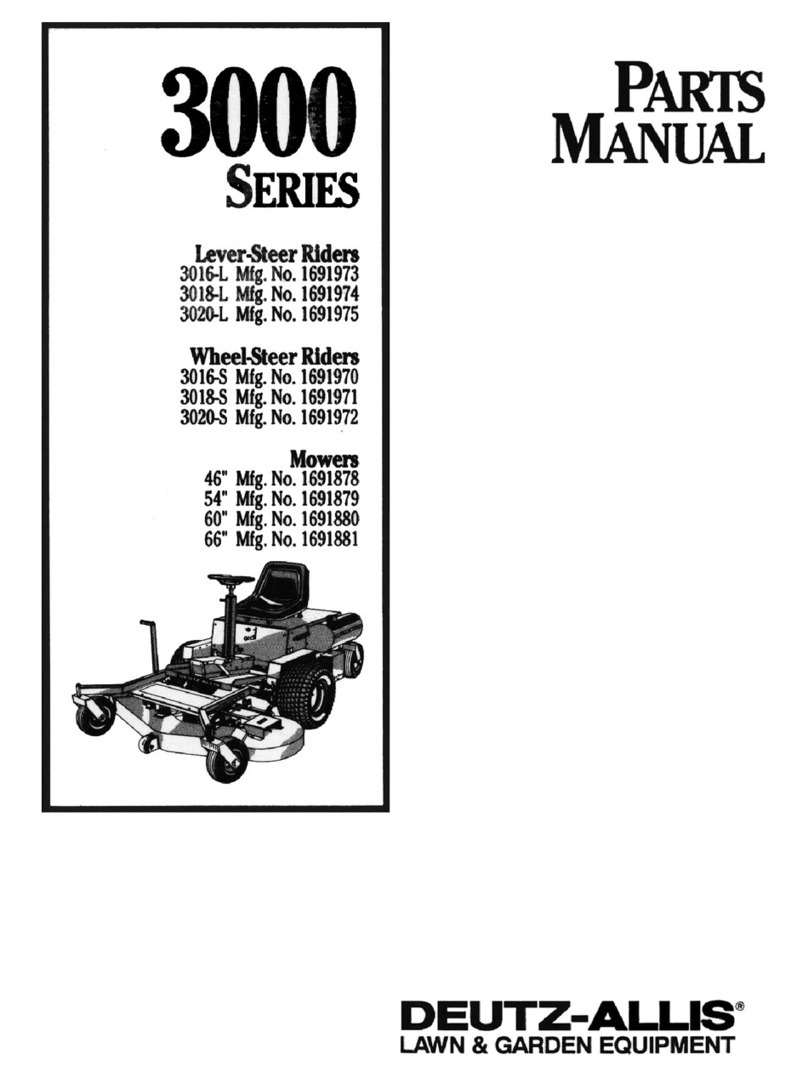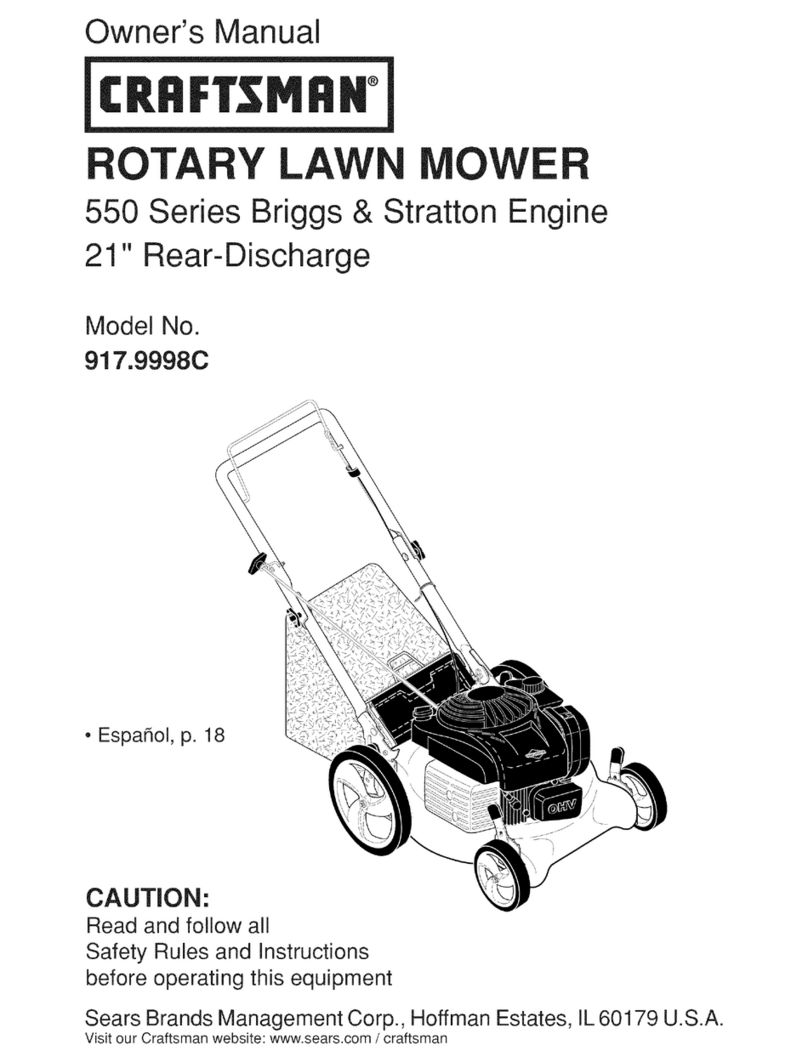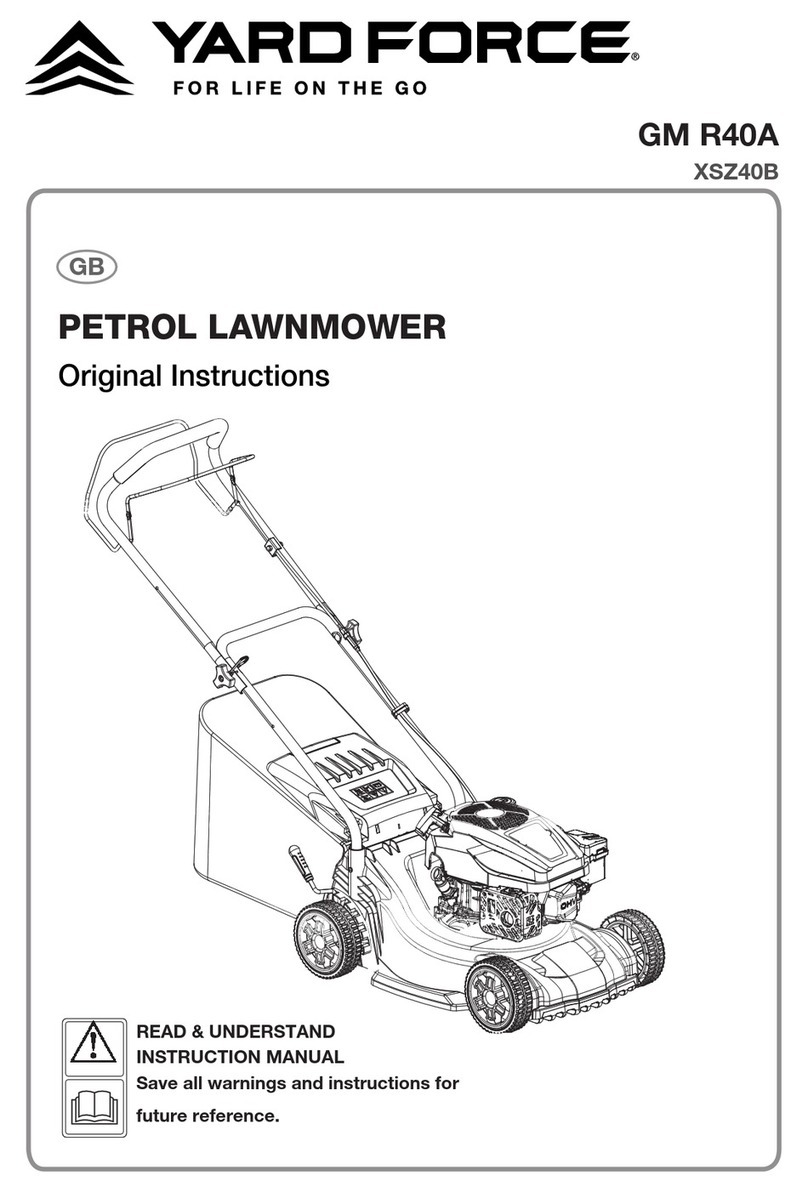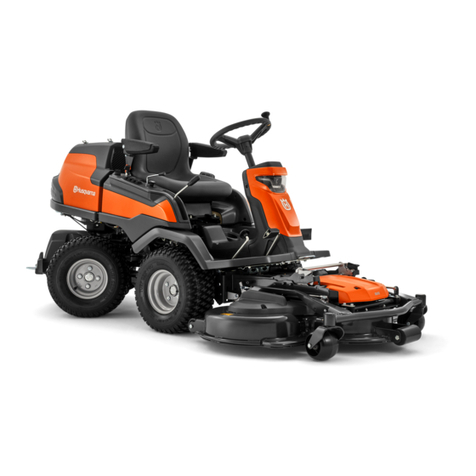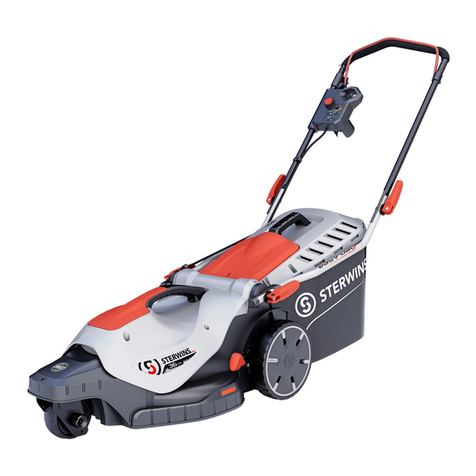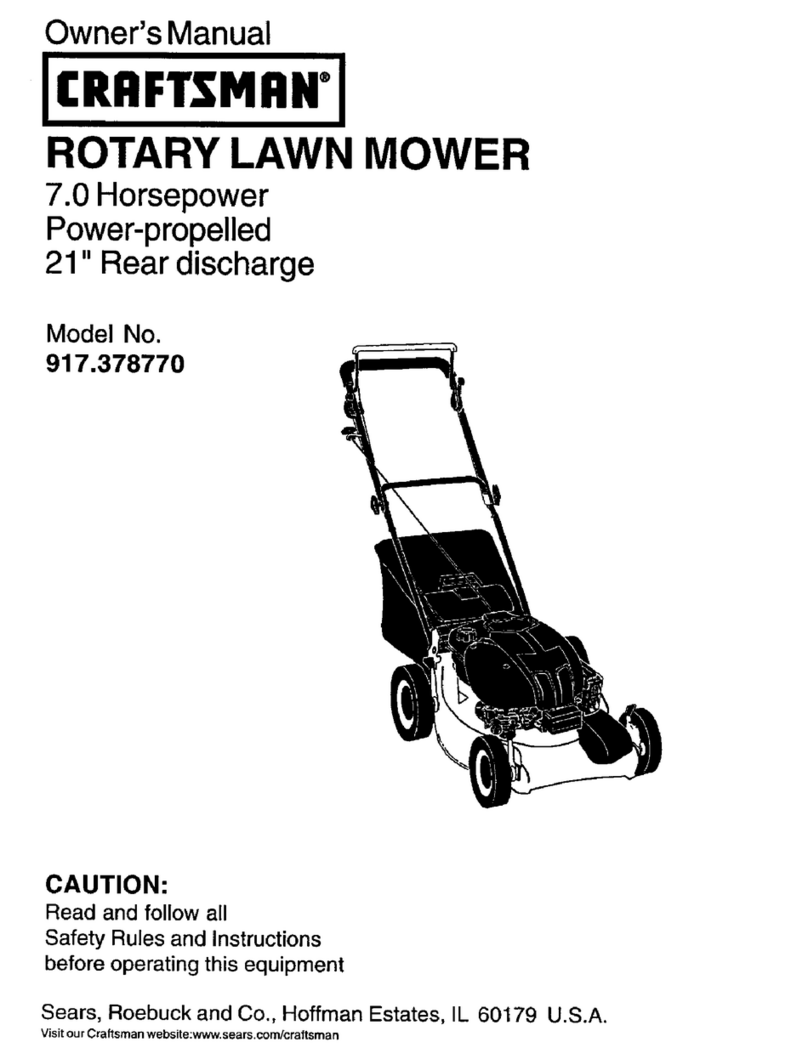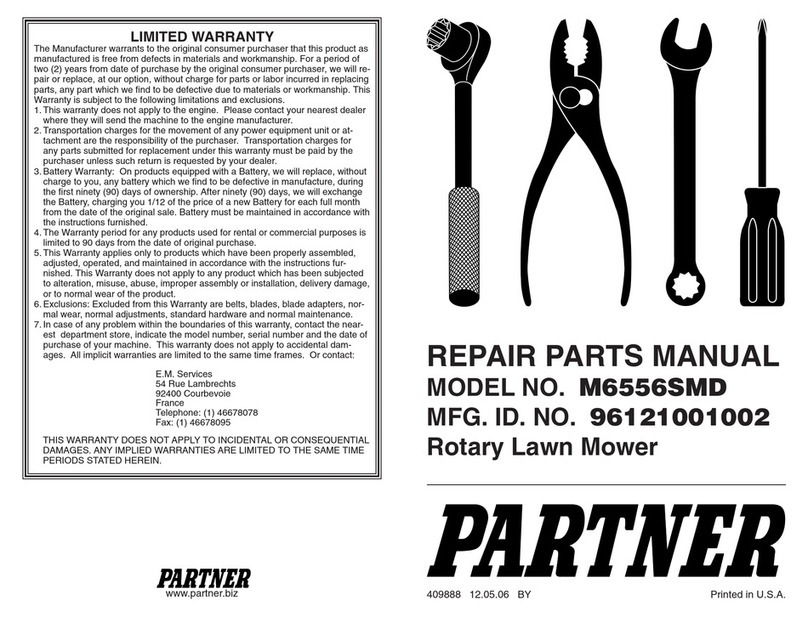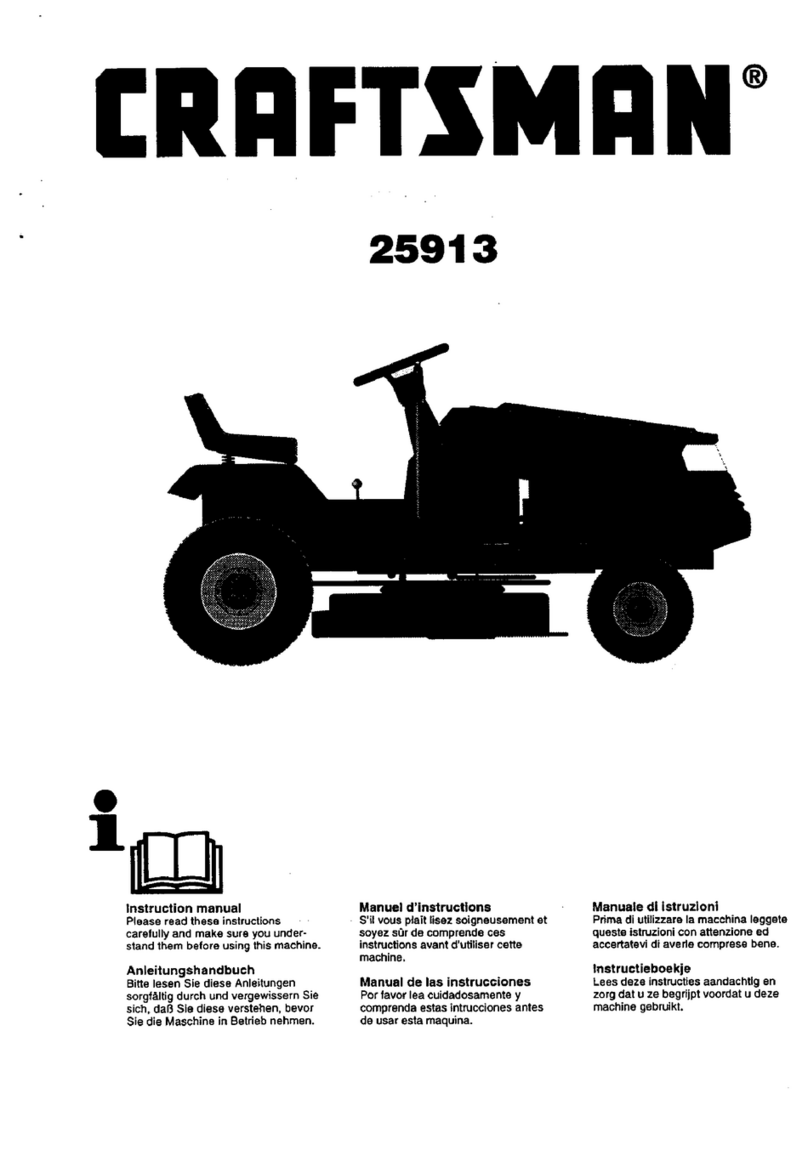
4
•Operator must be skilled and trained in how to drive on
hillsides. Failure to use caution on slopes or hills may
cause loss of control and vehicle to tip or roll possibly
resulting in personal injury or death.
•This product may exceed noise levels of 85 dB(A) at
the operator position. Ear protectors are recommended,
for prolonged exposure, to reduce the potential of
permanent hearing damage.
•When operating 4 wheel drive machine, always use the
seat belt and ROPS together and have seat pivot
retaining pin installed.
•If engine stalls or loses headway and cannot make it to
the top of a slope, do not turn machine around. Always
back slowly straight down the slope.
•Raise cutting decks and latch securely in transport
position before driving from one work area to another.
•Don’t take an injury risk! When a person or pet
appears unexpectedly in or near the mowing area, stop
mowing. Careless operation, combined with terrain
angles, ricochets, or improperly positioned guards can
lead to thrown object injuries. Do not resume mowing
until area is cleared.
•Do not touch engine, muffler or exhaust pipe while
engine is running or soon after it is stopped. These areas
could be hot enough to cause burns.
•If cutting deck strikes a solid object or vibrates
abnormally, stop immediately, turn engine off, set
parking brake and wait for all motion to stop. Inspect
for damage. If damaged, repair or replace any
components before operating.
•Before getting off the seat:
D. Set parking brake.
E. Move traction pedal to neutral and axle shift to HI
or LO position.
F. Disengage cutting decks and wait for blades to stop.
G. Stop engine and remove key from switch.
H. Do not park on slopes unless wheels are chocked or
blocked.
•Use only a rigid tow bar if it becomes necessary to tow
machine. Use trailer for normal transport.
Maintenance
•Before servicing or making adjustments, stop engine
and remove key from the switch.
•Make sure machine is in safe operating condition by
keeping all nuts, bolts and screws tight.
•Make sure all hydraulic line connectors are tight, and all
hydraulic hoses and lines are in good condition before
applying pressure to the system.
•Keep body and hands away from pin hole leaks or
nozzles that eject high pressure hydraulic fluid. Use
cardboard or paper to find hydraulic leaks. Hydraulic
fluid escaping under pressure can penetrate skin and
cause injury. Fluid accidentally injected into the skin
must be surgically removed within a few hours by a
doctor familiar with this form of injury or gangrene
may result.
•Before disconnecting or performing any work on the
hydraulic system, all pressure in system must be
relieved by lowering cutting units to the ground and
stopping engine.
•If major repairs are ever needed or assistance is desired,
contact an Authorized Toro Distributor.
•To reduce potential fire hazard, keep engine area free of
excessive grease, grass, leaves and dirt. Clean
protective screen on back of machine frequently. Never
wash a warm engine or electrical connections with
water.
•If engine must be running to perform maintenance or an
adjustment, keep hands, feet, clothing and other parts of
the body away from cutting units and other moving
parts. Keep all bystanders away.
•Do not overspeed the engine by changing governor
setting. To assure safety and accuracy, have an
Authorized Toro Distributor check maximum engine
speed.
•Shut engine off before checking or adding oil to the
crankcase.
•Disconnect battery before servicing the machine. If
battery voltage is required for troubleshooting or test
procedures, temporarily connect the battery.
•At the time of manufacture, the machine conformed to
the safety standards for riding mower. Ballast weight,
mounted to rear of traction unit, is required for machine
to conform to safety standard. Do not remove ballast
weight at any time. To ensure optimum performance
and continued safety certification of the machine, use
genuine Toro replacement parts and accessories.
Replacement parts and accessories made by other
manufacturers may result in non-conformance with the
safety standards, and the warranty may be voided.
